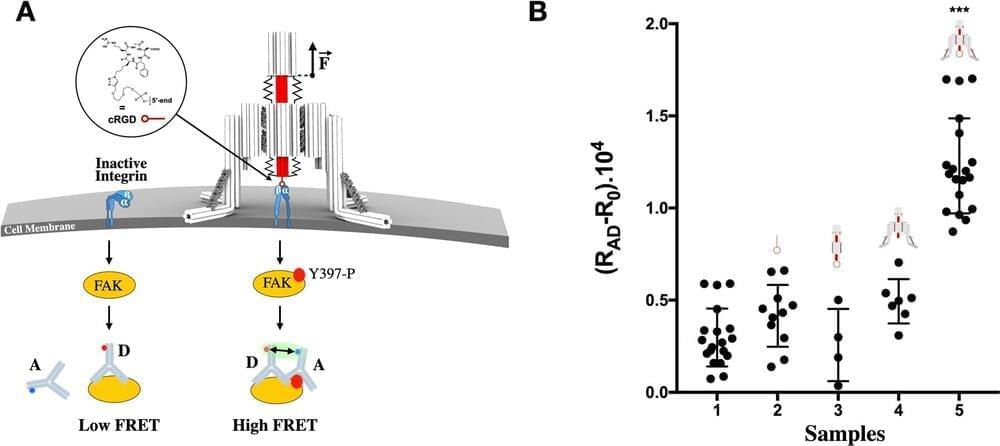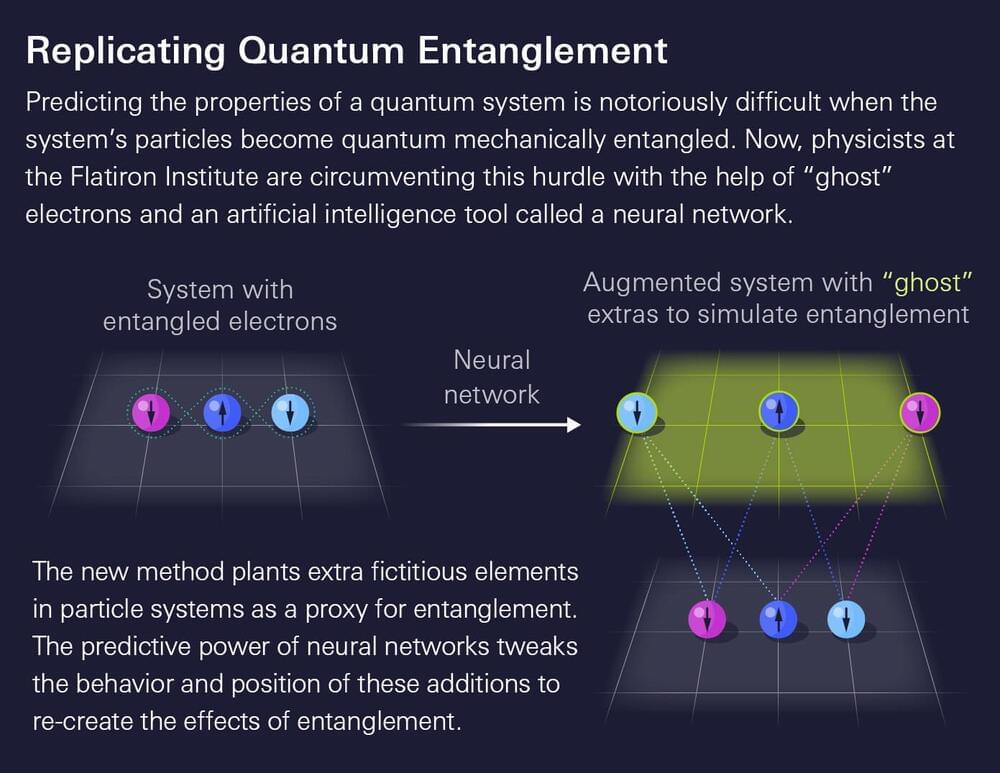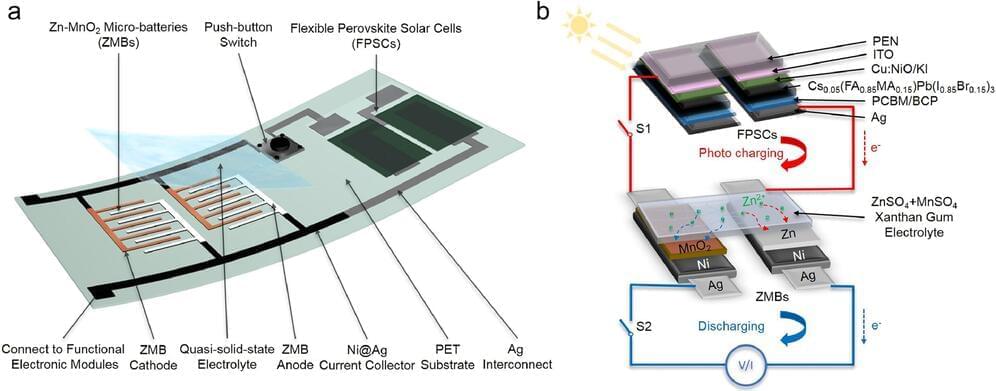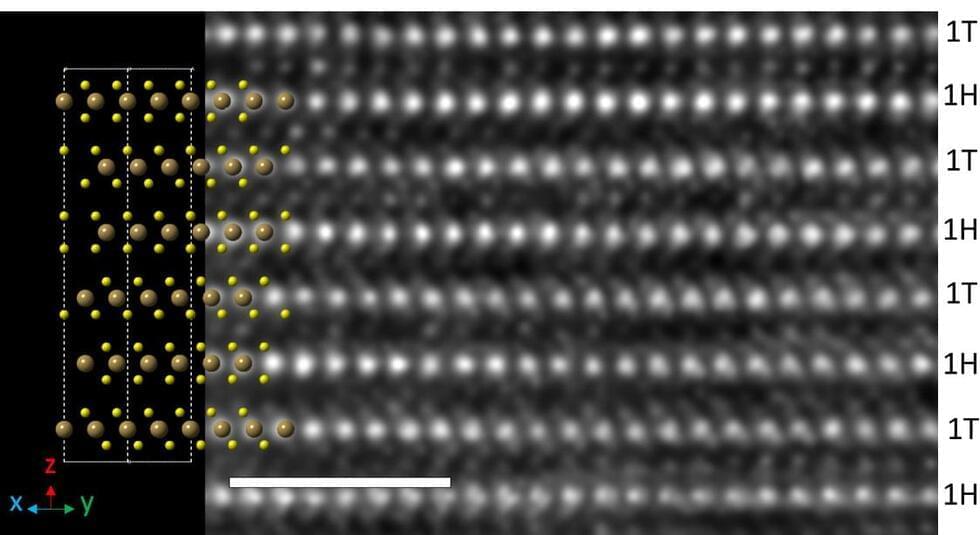A new system for keeping body tissues functional after death could help make more organs available for transplant.



Constructing a tiny robot from DNA and using it to study cell processes invisible to the naked eye… You would be forgiven for thinking it is science fiction, but it is in fact the subject of serious research by scientists from Inserm, CNRS and Université de Montpellier at the Structural Biology Center in Montpellier. This highly innovative “nano-robot” should enable closer study of the mechanical forces applied at microscopic levels, which are crucial for many biological and pathological processes. It is described in a new study published in Nature Communications.
Our cells are subject to mechanical forces exerted on a microscopic scale, triggering biological signals essential to many cell processes involved in the normal functioning of our body or in the development of diseases.
For example, the feeling of touch is partly conditional on the application of mechanical forces on specific cell receptors (the discovery of which was this year rewarded by the Nobel Prize in Physiology or Medicine). In addition to touch, these receptors that are sensitive to mechanical forces (known as mechanoreceptors) enable the regulation of other key biological processes such as blood vessel constriction, pain perception, breathing or even the detection of sound waves in the ear, etc.

Physicists are (temporarily) augmenting reality to crack the code of quantum systems.
Predicting the properties of a molecule or material requires calculating the collective behavior of its electrons. Such predictions could one day help researchers develop new pharmaceuticals or design materials with sought-after properties such as superconductivity. The problem is that electrons can become “quantum mechanically” entangled with one another, meaning they can no longer be treated individually. The entangled web of connections becomes absurdly tricky for even the most powerful computers to unravel directly for any system with more than a handful of particles.
Now, quantum physicists at the Flatiron Institute’s Center for Computational Quantum Physics (CCQ) in New York City and the École Polytechnique Fédérale de Lausanne (EPFL) in Switzerland have sidestepped the problem. They created a way to simulate entanglement by adding to their computations extra “ghost” electrons that interact with the system’s actual electrons.

Researchers find multiple important biomarkers in people with Hikikomori (pathological social withdrawal), and they demonstrate their potential for predicting the severity of the disorder.
Key blood biomarkers for the pathological social withdrawal disorder called Hikikomori have been discovered by researchers at Kyushu University. The team’s research enabled them to distinguish between healthy people and hikikomori sufferers, as well as to gauge the severity of the disease.
Hikikomori is a condition in which people isolate themselves from society and family for a time longer than six months, according to the Ministry of Health, Labour, and Welfare of Japan. Hikikomori, also called “pathological social withdrawal,” is said to affect over a million individuals in Japan as of 2022. Although it has traditionally been thought of as a syndrome specific to the Japanese culture, evidence over the past few decades has shown that it is increasingly becoming a global phenomenon. Some fear that the COVID-19.
With the 2020 Covid lockdowns still fresh in our minds, the recent outbreak of monkeypox in the United States has many people on edge. But what is monkeypox? How significant is this outbreak? Will it get worse? How can you prepare? These are alarming questions that people across the world are asking right now, and here we hope to answer at least a few of them.
Monkeypox is a member of the orthopoxvirus genus, the same genus that also houses the variola virus that causes smallpox. While the name suggests the virus originated in monkeys, this is misleading. It is more likely that rodents and small mammals are the origin of this zoonotic disease, with the source of a 2003 outbreak coming from prairie dogs.
While monkeypox was first discovered in 1958, there are indications it has experienced changes in the last few years that allow it to be more transmissible between humans. The recent global monkeypox outbreak was first detected in May 2022, and has since reached over 6,000 confirmed cases in the United States, and over 21,000 cases worldwide, resulting in the World Health Organization recently declaring a global health emergency.

Thirty seconds of sunlight could boost the battery life of future smartwatches and other wearables by tens of minutes, thanks to a renewable and rechargeable battery prototype developed by the University of Surrey.
Surrey’s Advanced Technology Institute (ATI) has demonstrated how its new photo-rechargeable system, which merges zinc-ion batteries with perovskite solar cells, could allow wearables to spring back to life without the need to plug in.
Jinxin Bi, a Ph.D. candidate at ATI and the first author of the paper, says that “this technology provides a promising strategy for efficient use of clean energy and enables wearable electronics to be operated continuously without plug-in charging. Our prototype could represent a step forward to how we interact with wearables and other internet-of-things devices, such as remote real-time health monitors.”

Scientists from The University of Manchester have developed a novel yet simple method for producing vertical stacks of alternating superconductor and insulator layers of tantalum disulphide (TaS 2). The findings, from a team led by Professor Rahul Nair, could speed up the process of manufacturing such devices – so-called van der Waals heterostructures – with application in high-mobility transistors, photovoltaics and optoelectronics.
Van der Waals heterostructures are much sought after since they display many unique and useful properties not found in naturally occurring materials. In most cases, they are prepared by manually stacking one layer over the other in a time-consuming and labour-intensive process.
Electron microscopy image of the synthesized 6R TaS 2 with an atomic model of the material on the left. The brown spheres represent Ta atoms and the yellow spheres represent sulphur atoms. The atomic positions and arrangement in the microscopic image are an exact match with the model, confirming its structure. (Image: University of Manchester)

While driven by the desire to pursue curiosity, fundamental investigations are the crucial first step to innovation.
When scientists announced their discovery of gravitational waves in 2016, it made headlines all over the world. The existence of these invisible ripples in space-time had finally been confirmed.
It was a momentous feat in basic research, the curiosity-driven search for fundamental knowledge about the universe and the elements within it. Basic (or “blue-sky”) research is distinct from applied research, which is targeted toward developing or advancing technologies to solve a specific problem or to create a new product.
But the two are deeply connected.

Separating the resin, fiberglass, and wood, among others, is achieved through using a mild acid solution. The materials can then go into the circular economy, creating new products like suitcases or flat-screen casings without the need to call on more raw resources.
The RecyclableBlade technology was developed in Aalborg, Denmark, and the blades were manufactured in Hull in the UK (pictured above). The nacelles were produced and installed in Cuxhaven, Germany. Siemens Gamesa has a plan to make all of its wind turbine blades fully recyclable by 2030 and all of its wind turbines fully recyclable by 2040.
Come Monday, August 8, and a drone delivery mailbox located in a suburb of Indianapolis will create history by accepting traditional posts from US Mail. That delivery will be followed by McDonald’s delivering Big Mac and french fries to the same mailbox through a drone.
Dronedek smart drone mailboxes are powered by Oracle. The company uses a platform-agnostic approach to consolidate and funnel deliveries (and pickups) from all carriers, couriers, and logistics services to GPS-verified locations. Dronedek is in talks with several national delivery services, including UberEats, DoorDash, and other major retail delivery companies, to cater to its next-gen mailbox.